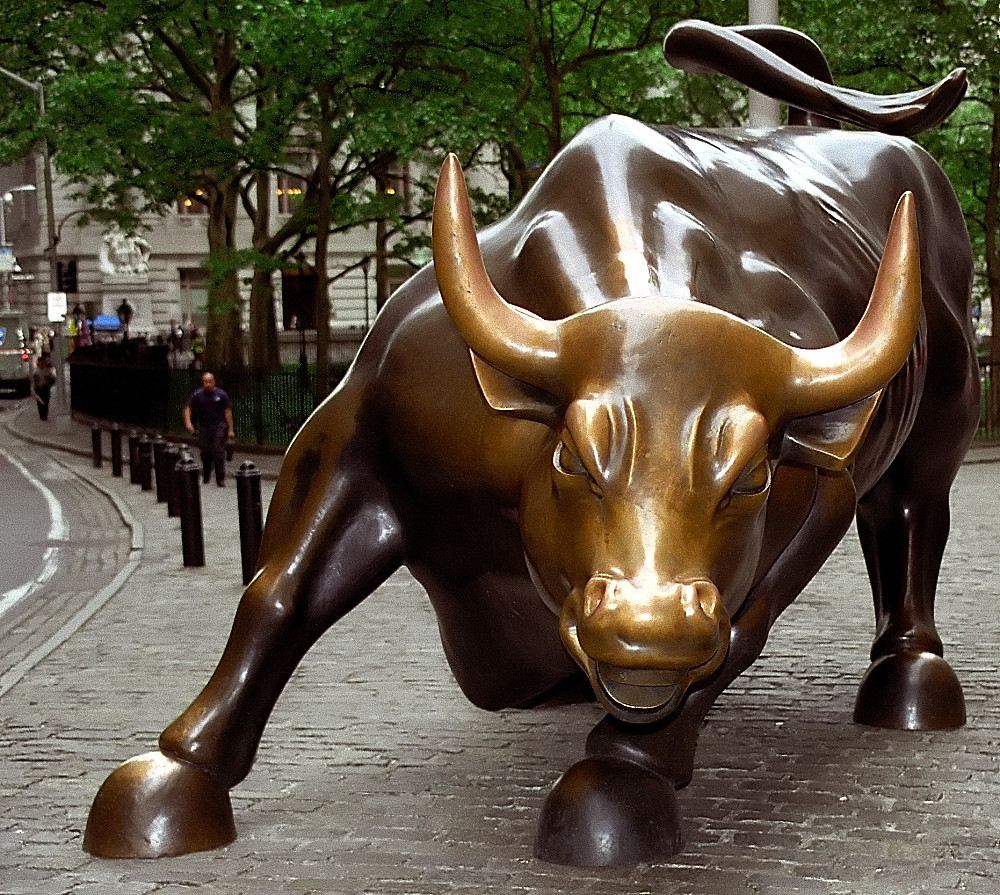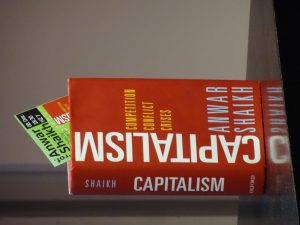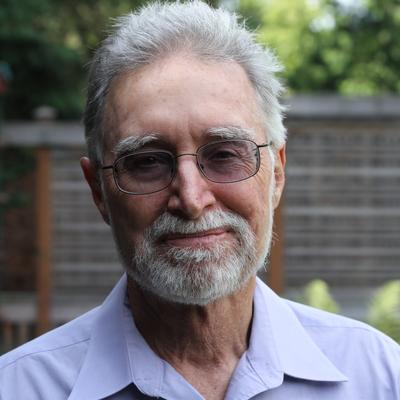Milton's Myth #5: Free Enterprise Is Fair
✑ ROBIN HAHNEL | ± 1 minute
In a world where the 85 richest people have more wealth than the poorest 3.5 billion, capitalist inequities can hardly be dismissed as a minor liability, which is what Friedman does. (All of Milton's myths here).
But we have already seen why capitalist distribution is inequitable. Distribution, according to the conservative maxim, means that the grandson of a Rockefeller who never works a day in his life will consume a thousand times more than a hard working doctor, simply because the former inherited ownership of large amounts of productive property. In a world where the 85 richest people have more wealth than the poorest 3.5 billion,1 capitalist inequities can hardly be dismissed as a minor liability, which is what Friedman does. As long as there are feasible economies that distribute the burdens and benefits of economic activity more equitably than capitalism – and in the next chapter we will see that there are – those who offer rationalizations for inequities in capitalism are nothing more than accomplices in the crime of economic injustice.
NOTES
1 From data in Credit Suisse’s 2013 Global Wealth Report.
‟To each according to the market value of the contribution of his or her labor.
In a world where the 85 richest people have more wealth than the poorest 3.5 billion, capitalist inequities can hardly be dismissed as a minor liability, which is what Friedman does. (All of Milton's myths here).
Originally published in chapter ten of Hahnel's book The ABC's of Political Economy: A Modern Approach (Pluto Press, 2014).
|
|---|
About the author (click)
Robin Eric Hahnel (1946) is Professor Emeritus of Economics at American University in Washington DC. He has published on marxian economics, liberating theory, economic crises , ecological issues and “participatory economics”. He has frequently contributed to Znet and is the co-director of Economics for Equity and the Environment.
General introduction (click)
This article is part of a series refuting several myths of the neoliberal economist Milton Friedman (1912-2006), extracted from the book ABC's of Political Economy: A Modern Approach (Pluto Press, 2014) by economist Robin Hahnel. The general introduction was included in the first post of this series but can also be found here below↴
When Milton Friedman published Capitalism and Freedom (University of Chicago Press) in 1964 free market capitalism was not yet ascendant. In the post WWII era Keynesian, social democratic capitalism was more dominant, and government regulation and guidance of the economy was generally considered necessary, prudent, and desirable. So Friedman was writing as a dissident when he argued that only free market capitalism can provide economic freedom, promote political liberty, allocate resources efficiently, motivate people successfully, and reward people fairly, and government intervention was usually unnecessary and counterproductive.
By 2002 when the first edition of The ABCs of Political Economy was published neoliberal capitalism stood triumphant over the demise of not only centrally planned Communism, but social democratic, Keynesian capitalism as well. Friedman’s disciples were more confident than ever that free market capitalism was the best economy possible. Deregulation, privatization, and dismantling the social safety net had become the order of the day. Keynesians had been successfully isolated and silenced, and only a scattered tribe of “heterodox economists” any longer challenged Milton Friedman’s claims about the virtues of free market capitalism.
What a difference twelve years can make! While neoliberal capitalism still clings to power almost everywhere in 2014, and especially within the economics profession, there are now many who doubt that free market capitalism is truly the best economic system for the vast majority. Six years after the worst financial crash in four generations the global financial system remains without adequate regulation, and is just as dangerous as it was before the collapse of Lehman Bros. Five years after the largest drop in GDP since the Great Depression unemployment remains high in all the advanced economies with no end in sight. And despite overwhelming evidence that we are on course to unleash disastrous climate change, carbon emissions continue to rise everywhere. While the tongues of all but a few critics were tied in 2002, there are now many voices bemoaning the loss of hard won reforms neoliberals assured us were counterproductive, no longer necessary, or unaffordable. Every day more people are realizing that we are on course for an ecological disaster of Biblical proportions. As our “old economies” continue to fail us, there is rising interest in a potpourri of initiatives that are self-consciously not business-as-usual economics, called the “new” or “future” economy. And finally, there is a notable stirring of renewed interest in alternatives to capitalism altogether. However, it is still instructive to begin a careful evaluation of free market capitalism with a point-by-point response to Milton Friedman’s claims about its purported virtues that have grown to become popular myths about capitalism. After which we can see where criticisms raised by protest movements in Europe and the US during the past five years fit into the long, historic debate over the pros and cons of laissez faire capitalism.
When Milton Friedman published Capitalism and Freedom (University of Chicago Press) in 1964 free market capitalism was not yet ascendant. In the post WWII era Keynesian, social democratic capitalism was more dominant, and government regulation and guidance of the economy was generally considered necessary, prudent, and desirable. So Friedman was writing as a dissident when he argued that only free market capitalism can provide economic freedom, promote political liberty, allocate resources efficiently, motivate people successfully, and reward people fairly, and government intervention was usually unnecessary and counterproductive.
By 2002 when the first edition of The ABCs of Political Economy was published neoliberal capitalism stood triumphant over the demise of not only centrally planned Communism, but social democratic, Keynesian capitalism as well. Friedman’s disciples were more confident than ever that free market capitalism was the best economy possible. Deregulation, privatization, and dismantling the social safety net had become the order of the day. Keynesians had been successfully isolated and silenced, and only a scattered tribe of “heterodox economists” any longer challenged Milton Friedman’s claims about the virtues of free market capitalism.
What a difference twelve years can make! While neoliberal capitalism still clings to power almost everywhere in 2014, and especially within the economics profession, there are now many who doubt that free market capitalism is truly the best economic system for the vast majority. Six years after the worst financial crash in four generations the global financial system remains without adequate regulation, and is just as dangerous as it was before the collapse of Lehman Bros. Five years after the largest drop in GDP since the Great Depression unemployment remains high in all the advanced economies with no end in sight. And despite overwhelming evidence that we are on course to unleash disastrous climate change, carbon emissions continue to rise everywhere. While the tongues of all but a few critics were tied in 2002, there are now many voices bemoaning the loss of hard won reforms neoliberals assured us were counterproductive, no longer necessary, or unaffordable. Every day more people are realizing that we are on course for an ecological disaster of Biblical proportions. As our “old economies” continue to fail us, there is rising interest in a potpourri of initiatives that are self-consciously not business-as-usual economics, called the “new” or “future” economy. And finally, there is a notable stirring of renewed interest in alternatives to capitalism altogether. However, it is still instructive to begin a careful evaluation of free market capitalism with a point-by-point response to Milton Friedman’s claims about its purported virtues that have grown to become popular myths about capitalism. After which we can see where criticisms raised by protest movements in Europe and the US during the past five years fit into the long, historic debate over the pros and cons of laissez faire capitalism.
I
magine a capitalist economy where discrimination was successfully outlawed and labor markets were competitive. Even under these best of circumstances private enterprise market economies would distribute the burdens and benefits of economic activity according to the conservative maxim 1: to each according to the market value of the contribution of his or her labor and productive property.
Conservative maxim 1? (click)
In chapter 2 of Hahnel's book The ABC's of Political Economy, previously published on SE, Hahnel discusses and compares three different "conceptions of economic justice" (and explains why he favors the third one):
- Conservative Maxim 1: Payment according to the value of one’s personal contribution and the contribution of the productive property one owns.
- Liberal Maxim 2: Payment according to the value of one’s personal contribution only.
- Radical Maxim 3: Payment according to effort, or the personal sacrifices one makes.
NOTES
1 From data in Credit Suisse’s 2013 Global Wealth Report.
























Comments
Post a Comment
Your thoughts...